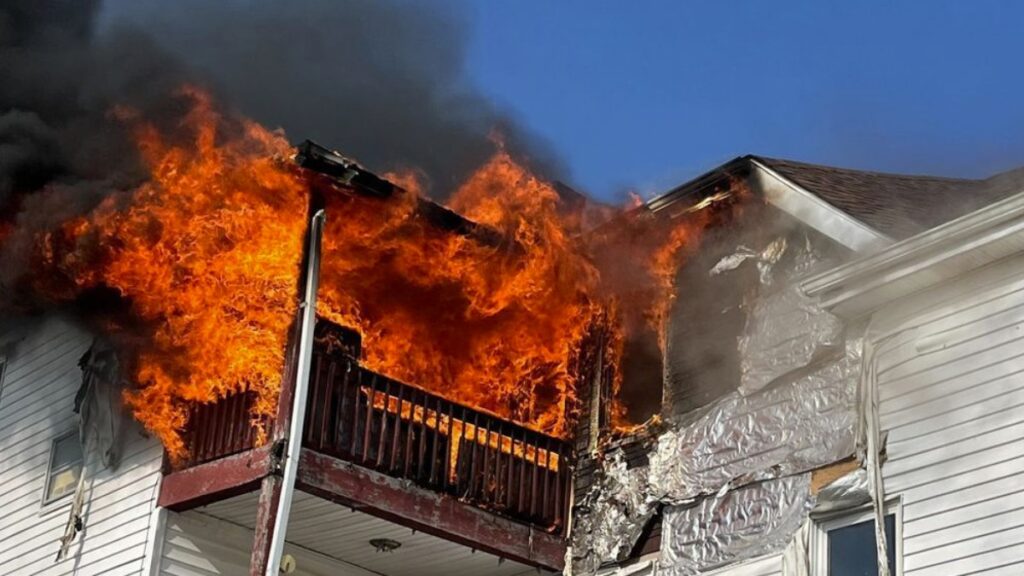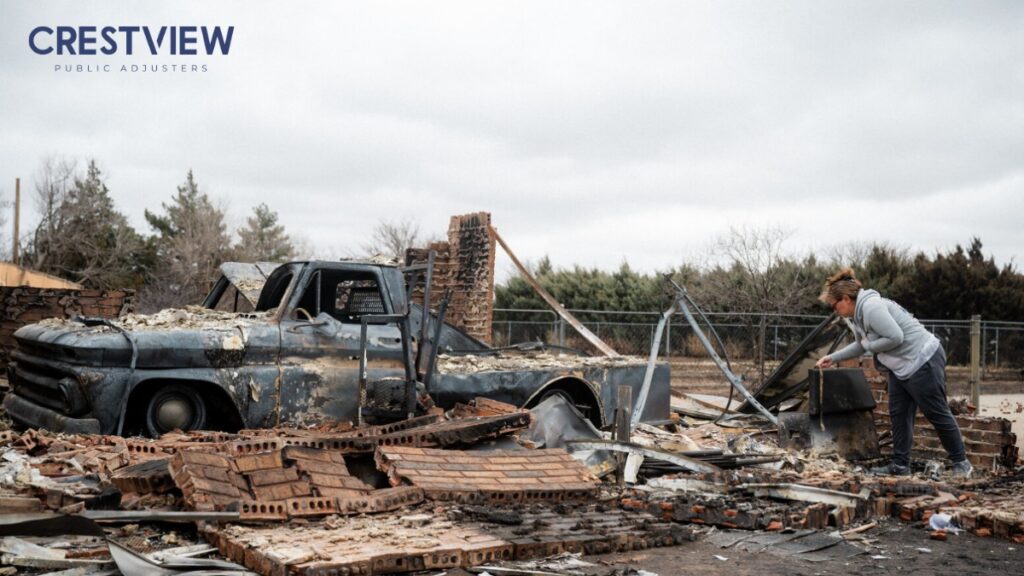Key Points:
- Prioritize safety and secure your property after a house fire.
- Document damages thoroughly and understand your insurance policy.
- Work with professionals like public adjusters to maximize your claim.
What to Do After a Fire in Your Home
After a fire in your home, the key steps include ensuring safety, contacting your insurer, documenting the damage, and understanding your policy. Acting methodically will speed up recovery and protect your rights as a homeowner.
1. Ensure Safety First
Before addressing anything else, make sure your household is safe and secure. Fires can leave structural damage and hidden hazards that could put you in danger.
- Listen to Fire Officials: Only re-enter your home once the fire department declares it safe. Hidden embers or structural instability could cause harm.
- Protect Against Hazards: Wear gloves and a mask when entering the property to avoid exposure to soot, ash, and hazardous fumes.
- Account for Family Members: Ensure everyone, including pets, is accounted for. If temporary housing is needed, contact local disaster relief organizations for assistance.
Additionally, take steps to secure the property:
- Board Up Openings: Broken windows and doors should be covered to prevent trespassing or additional damage from weather.
- Disconnect Utilities: Avoid risks of gas leaks or electrical fires by having professionals inspect and shut off utilities if necessary.

2. Notify Your Insurance Company
As soon as you’re safe, contact your insurance provider to report the fire. Acting promptly will ensure your claim is processed efficiently.
- Provide Initial Details: Be prepared to share basic information about the fire, including the date, cause (if known), and extent of damage.
- Request Temporary Housing Coverage: If your home is uninhabitable, your policy may cover additional living expenses (ALE) for temporary accommodations.
- Understand Policy Terms: Familiarize yourself with your coverage, including limits for dwelling repairs, personal property, and other related costs.
3. Document Damages Thoroughly
Your insurance claim will rely heavily on the documentation you provide. Thorough and accurate records can significantly impact your settlement amount.
- Photograph the Damage: Take clear pictures of every damaged area, including close-ups of specific items and wide shots of entire rooms.
- Create an Inventory List: Make a detailed list of all damaged or lost items. Include their approximate value, age, and any receipts or proof of purchase.
- Track Expenses: Keep receipts for out-of-pocket costs like temporary lodging, meals, and emergency repairs. Insurers often reimburse these under ALE coverage.
4. Begin the Insurance Claims Process
After notifying your insurer and documenting damages, you’ll need to navigate the claims process. This can be complex but is crucial to getting the funds you need.
- Meet with the Adjuster: Your insurance company will assign an adjuster to evaluate the damage. Be present during the inspection and provide your documentation.
- Negotiate if Necessary: Initial offers from insurers may not cover your full loss. Be prepared to negotiate and provide evidence supporting your claim.
- Track Timelines: Insurance companies are legally obligated to respond within specific timeframes. Follow up regularly to ensure your claim progresses smoothly.
5. Work with a Public Adjuster
The claims process can be overwhelming, especially when dealing with significant losses. Public adjusters can help you maximize your settlement by advocating on your behalf.
- What Public Adjusters Do: They review your policy, document damages, and negotiate with your insurance company to secure fair compensation.
- When to Hire One: Consider hiring a public adjuster if your claim is denied, underpaid, or if you’re unsure how to navigate the process.
- Benefits of Their Expertise: Public adjusters often secure higher payouts than homeowners managing claims alone, saving you time and stress.
6. Start Recovery and Repairs
Once your claim is underway, focus on cleanup and rebuilding. The recovery phase is critical to restoring your home and life.
- Fire Damage Restoration Services: Hire professionals to clean soot, smoke, and water damage. Restoration companies use specialized equipment to prevent further deterioration.
- Rebuild Safely: Work with licensed contractors for structural repairs and upgrades. Ensure all work complies with local building codes.
- Salvage What You Can: Some items, like electronics or furniture, can be restored. Restoration specialists can help you decide what’s worth saving.

7. Prepare for the Future
A house fire is a sobering experience, but it can also motivate you to improve your home’s safety and preparedness.
- Upgrade Safety Measures: Install smoke detectors, fire extinguishers, and sprinkler systems to prevent future fires.
- Review Insurance Coverage: Reassess your policy to ensure it covers the true cost of rebuilding and personal belongings.
- Create an Emergency Plan: Develop a fire escape plan with your family and practice it regularly to stay prepared.
Take the First Step Toward Recovery with Crestview Public Adjusters
Recovering from a house fire can be overwhelming, but you don’t have to face it alone. Crestview Public Adjusters specializes in helping homeowners in New Jersey, New York, and Florida navigate complex insurance claims.
From documenting damages to negotiating with insurers, Crestview ensures you receive the compensation you deserve. Let us handle the paperwork while you focus on rebuilding your home and life.
Contact Crestview today for expert assistance with your fire insurance claim!

